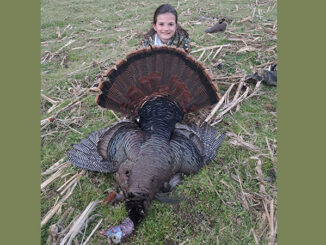
Hard to reach, easy to catch: it’s a special fish
Brook trout are easy to locate and easy to catch; getting to them is the hard part. Native brooks inhabit the headwaters of mountain streams, the wild, hard-to-reach sections of creeks accessible only by foot where the water is pure and cold, places choked with rhododendron and mountain laurel.
Brook trout are not only the mountains’ most beautiful fish, they live in the most scenic places in the mountains.
Brook trout (Salvelinus fontanalis) are part of the salmon family, the only salmonid native to the southern Appalachians. Often called “speckled” trout because of their brilliant color, brook trout once dominated streams from the foothills to the mountains.
Although prized as food, they weren’t prized as gamefish. When hooked, brook trout do not make long, tail-dancing runs like rainbow or brown trout. Instead, they dive, tug and twist, only occasionally popping to the surface. They are much easier to catch than a wild rainbow or brown trout. Place a fly in a riffle or at the edge of a pool, and you’ll immediately get a strike. Don’t expect a large fish, because brook trout don’t live long or grow large. The average life span for a wild brook trout is three to five years, and average size is between six and eight inches. A day’s fishing trip will produce more fish in the 4- to 6-inch range than in the 6- to 8-inch range. Occasionally, if you find a nice, deep pool, you may hook a 10- or 11-inch brookie.
The state record for a brook trout is 7 pounds, 7 ounces, caught in Raven Fork River in 1980 — obviously a stocked trout because native brooks just don’t get that large, regardless of the habitat.
Beginning in the 1880s, rainbow trout from the West and brown trout from Europe were widely stocked throughout the southern Appalachians to provide a more diverse and challenging sport fishery. With extensive logging and development destroying their habitat, and having to compete with exotic species for food, brook trout were either displaced or pushed back to places where neither loggers wanted to go nor exotic trout could go.
Many mountain fishers refer to brooks as speckled trout, some believing they are a separate species. Indeed, biologists have identified a strain of brook trout found only in the southern Appalachians. When you compare a hatchery-raised brook to a stream-raised brook, there is no comparison.
Wild brook trout have wavy, worm-hole-like markings on their olive-green backs. On their sides, from head to tail, are red and pale yellow dots surrounded by delicate blue halos. Their bellies are cream colored, and the tips of their dark lower (pectoral, ventral and anal) fins are white. The white-tipped fins are a sure way of identifying a brook trout. Another identifying feature is that brook trout do not have scales like brown and rainbow trout.
Some of the mountain area’s biggest brook trout are in the headwaters of the Tuckasegee River in the Panthertown section of the Nantahala National Forest in Jackson County. The streams, Greenland Creek and Panthertown Creek, consistently produce brook trout 11 inches and larger. Greenland and Panthertown creeks are managed by the N.C. Wildlife Resources Commission under catch-and-release, artificial lures-only regulations. Three other brook trout streams also are managed under these regulations: Flat Creek in the Roy Taylor Forest in Jackson County, and Lower and Upper creeks, tributaries of the South Toe River in Yancey County.
Another excellent wild brook trout fishery is the headwaters of Big Snowbird Creek in Graham County. From the parking lot at the end of Big Snowbird Road, it’s about a 5-mile walk to Middle Falls, where the brook trout section begins. A good trail follows the stream, and brook trout in the 10- to 11-inch range are fairly common in this section.
To fish for native brook trout, you’ll need a short fly-rod, because you won’t be making log casts, and casting usually will be tight. Also take plenty of flies, the smaller the better, and expect to lose a few in the bushes.
To locate native brook trout, get a map that shows a watershed. Look for feeder streams or the headwaters of a primary stream in the watershed. Then, start walking. More than likely, you’ll find a streamside trail to take you part of the distance. You may have to bushwhack through briars and thick tangles of rhododendron. The rougher the terrain, the fewer the fishers who have gone before you. Keep climbing until you find a waterfall or a series of waterfalls. Above the waterfalls is where you’ll find brook trout. You’ll wonder if all the effort is worth it until you find a pool surrounded by sheer, rock cliffs where water cascades over a ledge of mossy rocks. Cast a parachute Adams or a Quill Gordon into the waterspill, and before the fly floats more than few inches, you’ll see a splash, feel a hard tug on the line, and when you land your catch and hold it in your hands, it will take your breath away.
That’s what makes the hard work of fishing for native brook trout worthwhile.







Be the first to comment